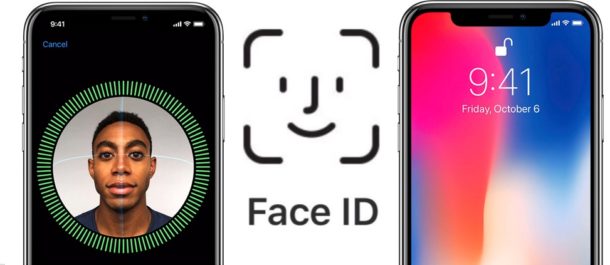(单词翻译:单击)
If you upload a photo into Google's reverse image search,
上传一张照片到谷歌的反向图像搜索页面,
it'll find websites where that picture has appeared,
网页就会弹出图片出现过的网站,
or provide “visually similar images” that have the same coloring and composition.
或者“看上去与之近似的图片”,也即具有相同的色彩和组成的图片。
The leading search engine in Russia, called Yandex, has reverse image search too,
俄罗斯搜索引擎巨头Yandex也有反向图像搜索功能,
but it doesn't work the same way.
其搜索原理却并不相同。
It's not looking for visually similar images.
它找的并不是视觉上近似的图片。
It's looking for similar faces, the same face.
而是近似的面孔,甚至是同一张面孔。
The difference between these search engines is that Google hasn't switched on facial recognition and Yandex has.
这两个搜索引擎的不同之处在于,谷歌没有启用人脸识别,而Yandex启用了。
On Google, you can enter a name and look for a face.
你可以用谷歌搜索某个名字对应的面孔。
But on Yandex, you can enter a face and look for a name.
用Yandex你却能用一张面孔搜索对应的名字。
And that distinction represents a potentially enormous shift in our offline lives,
这一区别代表我们的线下生活或将发生巨大转变,原本,把自己介绍给谁一般都是我们自己说了算,
where we usually decide who we introduce ourselves to.
如今,这一情形或将成为过去。
Now that computer scientists have created tools that can turn faces into nametags,
既然计算机科学家们已经发明了可以把脸变成名片的工具,
it's worth reflecting on how we got here and what we stand to lose.
那我们就有必要反思一下我们如何走到了今天,我们又承担着怎样的风险这一问题了。
A computer's facial recognition system has broadly the same components as your own facial recognition system.
电脑的面部识别系统与我们人体自带的面部识别系统的组成是差不多的。
You see someone with your eyes, your mind processes the features of their face, and recalls their identity from your memory.
我们的眼睛看到一个人时,我们的大脑就会对他们的面部特征进行处理,然后从你的记忆中回忆他们的身份。
Now imagine if you could have eyes in lots of places and could download and store memories from other people,
现在试想一下,如果你在很多地方都有眼睛,还能从别人那里下载和存储记忆,
then you have something more like the automated version of facial recognition,
那你就有了类似(电脑的)自动面部识别的功能,
which has only come together in the past 5 years or so.
而这种功能面世不过才5年左右。
Its eyes are digital cameras, revolutionary machines that turn light into data.
数码相机就是它的眼睛,而数码相机堪称是将光转换成数据的一种划时代的机器。
"It's a state of the art digital model, which records images on memory chips instead of photographic film."
“这是目前最尖端的一种数字模型,它能把图像记录在记忆芯片而不是胶片上。”
Digital imagery arose in the early 2000s, which coincided with the arrival of the social internet.
数字图像是21世纪初才出现的,而社交网络也是这个时候出现的。
So right when we were able to take an unlimited number of pictures,
所以,就在我们可以想拍多少张照片就能拍多少张照片的时候,
Facebook, Flickr, Youtube, and other sites told us our images had a home online.
Facebook、Flickr、Youtube和其他网站就告诉我们,我们可以在网上给那些照片安个家。
"100 million photos are being tagged every day on Facebook."
“每天被上传到Facebook上的照片足有1亿张。”
Professional photography also went up on websites, news articles, and photo libraries,
网站、新闻文章和图片库里的专业摄影照片的数量也越来越多了,
and Google's web crawlers gathered them into Image Search.
那些照片也都被谷歌的网络爬虫工具收集到了他们的图片搜索工具里。
And then the computer vision researchers went to work.
接下来,研究计算机视觉的工作人员开始登场了。
The millions of digital photos posted to the internet,
被上传到网上的海量数码照片,
like the Facebook pictures where we tagged our friends or Google image results of celebrities--
比如我们在Facebook上 @朋友的照片,谷歌搜索的名人的照片——
they were used to build the “mind” of facial recognition systems.
都被用来建构面部识别系统的“大脑”了。
That mind is made up of a series of algorithms.
该大脑是由一系列算法组成的。
They locate faces in an image, map facial features to correct for head rotation,
这些算法会定位图片中的人脸,匹配面部特征,矫正头部角度,
and then take over 100 measurements that define that individual face.
并对100多个面部特征进行测量。
Those measurements are usually described as the distance between the eyes, the length of the nose, the width of the mouth.
测量的对象通常包括眼距,鼻长,嘴宽等。
But the truth is, nobody knows exactly what's being measured.
事实是,谁也不知道被测量的究竟有哪些因素。
That's determined by a deep learning algorithm looking for correlations in raw pixel data.
测量什么不测量什么都是由寻找原始像素数据里的相关性的深度学习算法决定的。

To train that algorithm, engineers give it sets of triplets:
为了训练算法,工程师会给他们很多组三张一组的照片组:
an anchor photo, another photo of the same person, and a photo of a different person.
一张目标检测照片,同一个人的另一张照片,和另一个人的照片。
The algorithm is tasked with deciding what to measure
算法要决定测量哪些元素,
so that the statistical difference between the two matching photos is as small as possible
才能将两张匹配的照片的统计学差异缩小到最小,
while the distance between the non-matching photos is as large as possible.
同时将两张不匹配的照片的统计学差异扩大到最大。
These algorithms are refined through millions of examples,
通过无数次的实验,这些算法会得到不断的完善,
but they still don't perform equally well on all types of people or on all types of photos.
但还是无法做到无论检测哪种类型的人或哪种类型的照片都能表现地同样优秀。
That hasn't stopped them from being packaged and distributed as ready-to-use software.
然而,这一问题并没有阻止他们将这种系统当成随时可以使用的软件包装分派出去。
But whoever uses that software won't be able to identify you until you're in their database of known faces.
不过,无论是谁用这个软件,只要你还没有进入他们的熟脸数据库,他就无法识别出你。
That's the "memory" of the system - and it's separate from the training images.
这就是这种系统的“记忆”——这个记忆和它们训练时使用的图像是不一样的。
In the case of the iPhone's face ID, it's a database of one -
就拿iPhone的刷脸认证为例,它其实就是一个数据库——
you volunteer to store your face on your device in exchange for easily unlocking your phone.
你自愿将你的面部图像存储在你的手机设备上,以换取轻松解锁这一功能。
Companies like Facebook and Google also keep databases of their users.
Facebook和谷歌等公司也有用户数据库。
But it's governments that typically have access to the largest databases of names and faces,
但通常只有政府才能访问最大规模的姓名面孔数据库,
so facial recognition significantly expands the power of the state.
因此,面部识别极大地扩充了国家的权力。
They collected these images for other reasons
他们收集这些图像还有别的原因,
and now they're repurposing them for facial recognition without telling us or obtaining our consent,
现在,他们既没有跟我们打招呼,也没有征得我们的同意就又要将那些图片用于人脸识别,
which is why several US cities have banned government use of facial recognition.
这也是美国几个城市的政府被禁止使用人脸识别工具的原因。
In the private sector, retail stores, banks, and stadiums can create or buy watchlists of known shoplifters, valued customers,
私营经济领域,零售商店、银行和体育场也能创建或花钱购买已确认的扒手、重要客户
or other persons of interest, so they're notified if one of those people shows up.
或其他有关人士的观察名单,这样一来,名单上的人已出现,他们就能有所察觉。
And then there's another source of labeled photos.
此外,带标记的照片还有一个来源。
Those are the ones we've been labeling ourselves by setting up profiles on social media networks.
那就是我们在社交媒体上创建个人资料时贴上去的我们自己的照片。
It's typically against the terms of use to program bots that can download faces and names from Linkedin, Twitter, of Facebook, but it's doable.
对能够从领英、推特和Facebook上下载人脸图片和姓名的程序而言,下载这种照片是违反使用条款的,但也不是不可行。
And what's at stake is something that most of us take for granted:
这样一来,就可能威胁到我们大多数人都认为是理所当然的一种东西:
our ability to move through public spaces anonymously.
那就是我们不具名地穿梭于公共场合的能力。


